Likbez. Aerodrome-free and dispersed air base
Around aviation and ekranoplanes, a number of myths have been created that openly distort the capabilities of aircraft and create distorted ideas among the population interested in the issue. Alas, sometimes people who are professionally obligated to understand the issue also become victims of these myths.
One of these myths is that to ensure the basing of some specific aircraft, a simpler infrastructure is needed than for normal aircraft, which supposedly expands their capabilities for dispersed or non-aerodrome basing.
It is worth analyzing these myths in more detail. To begin with, we will determine the list of myths themselves and the list of aircraft around which they grew.
Competitive aircraft and boundary conditions
We will deal with the following statements:
1. The capabilities of seaplanes based outperform the capabilities of conventional aircraft.
I must say that this is partly and sometimes true, but with a number of reservations that change everything very much.
2. Aircraft with vertical / short take-off and landing are very well suited to ensure dispersed basing of combat aircraft — better than conventional combat aircraft with horizontal take-off and landing.
3. P. 1. Allegedly, for the basing of ekranoplanes, a minimum infrastructure is required in comparison with airplanes and therefore they are less limited in choosing places for basing. At first glance, this point could be combined with seaplanes, but this particular myth did not arise on its own, it has creators who have made some reservations to it. They will also be disassembled.
4. Aircraft with horizontal take-off and landing and a wheeled chassis, not amphibians - the most “problematic” class of aircraft from the point of view of basing, requiring the most expensive infrastructure, especially for large multi-engine aircraft.
We will check all these statements for their veracity, we will designate what real restrictions on basing these or those aircraft have and define the most universal of them, those that have the least restrictions and the most demanding basing, those whose use is possible only in the narrowest range of conditions.
Immediately worth identifying three points.
Firstly, the radio navigation equipment will be left out of consideration, simply because at any airport or at any temporary aerodrome it will have to be, as well as on the basis of seaplanes. This is a separate issue, and in this, almost all aircraft are equal.
Secondly, absolute champions capable of being based literally anywhere — helicopters — will remain outside the ratings. Their capabilities are already understandable, and are known to everyone, and the need does not raise any doubts.
Thirdly, all sorts of exotic and off-stage aircraft, which are used today in minimal quantities and are in fact exotic, primarily airships and gyroplanes, and other exotic aircraft. In theory, ekranoplans should also be in this group, but they have a lobby, which means that their real capabilities need to be prepared along with hydroplanes and vertical lines.
Debriefing Myth 1: Seaplane abilities outweigh conventional planes
First you need to decide on the terminology. Seaplanes can conditionally be divided into several large groups. The first and one of the most common in the world is a float plane. This is an airplane mounted on floats instead of wheels. Such aircraft have been and are different.
The largest float aircraft in stories was the Italian CANT Z.511 - a delivery aircraft for subversive mini-submarines. It was a really big and, in general, a good car for its time. During World War II, there were reconnaissance planes and even fighters.
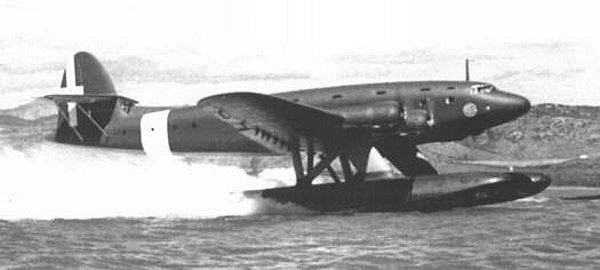
The largest float aircraft in history
Now, however, such large float planes are not manufactured, and they are represented by single and twin-engine modifications of conventional wheeled aircraft. Basically, float planes are “clean” hydroplanes, they can only land on water and be based on it, but there are floats equipped with wheels — such planes can be pulled onto a flat and hard surface and rolled on the ground.
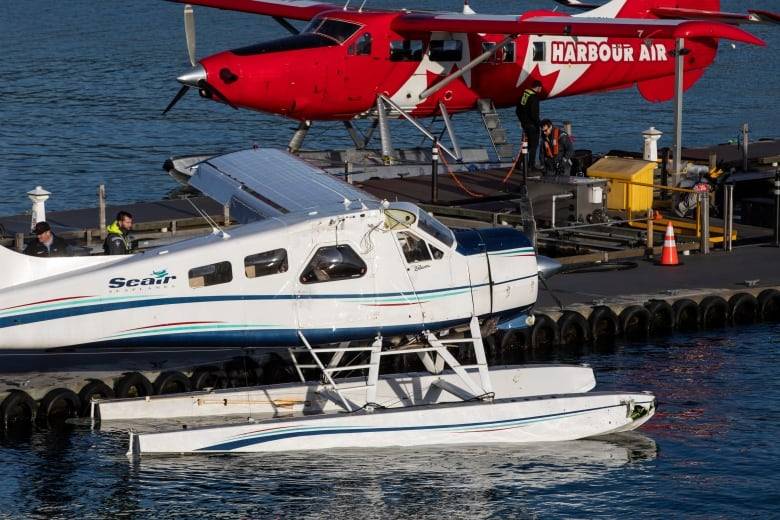
Some models of such aircraft, equipped with so-called amphibious floats, can land on the ground, but the strength of their chassis is lower than that of wheeled aircraft and the restrictions on the airfield used can be slightly higher and the stability on wheels is frankly poor.
The second type of seaplane is a flying boat. The specificity of flying boats is that they completely lack a wheeled chassis, at best there are attached wheels that can be mounted on a plane lying in a drift to pull it ashore. During the Second World War, flying boats were used by almost all the belligerents, and after the war they were also armed for some time, for example, in the USSR, Be-6 and Be-10 flying boats were in service with naval aviation.
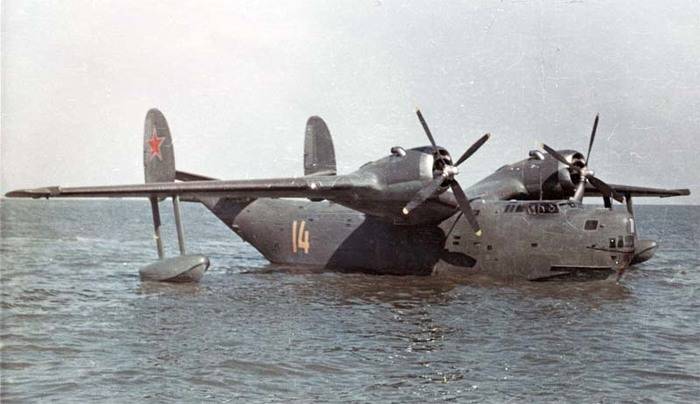
Be-6 Naval Aviation of the USSR Navy
The third type of seaplane is an amphibious aircraft. This aircraft has both the ability to land on water, and the ability to land on a regular airfield using a full wheel chassis. In this case, usually amphibious aircraft have a heavily weighted body and poor takeoff and landing characteristics, at least worse than a conventional aircraft in the same weight, dimensions and with the same engines.
Thus, we can safely divide seaplanes into two large groups: those that can take off only from the water (float planes and flying boats) and those that can take off from the water and from the ground (amphibians and float planes with amphibious floats) .
What are the conditions and limitations for using seaplanes? You can immediately say the following: for amphibious aircraft when flying from the ground, the same restrictions apply as for ordinary "land" wheeled aircraft. Additional limiting factors are the need for a slightly longer runway and better quality of its coverage (this will become apparent when analyzing the capabilities of conventional aircraft). When flying from water, the restrictions on the use of these machines are as follows:
1. The need to have an ice-free ice-free water area. Ice is an important caveat. Formally, Russia has 14 ice-free ports through which year-round navigation is possible without or almost no icebreaking support. In fact, this applies mainly to vessels with a strong displacement hull. The reason is simple: open water is not so "clean" and it can have drifting ice floes, sometimes quite large, namely the so-called grated ice (ice floes up to 2 meters across), frost, sludge, and other ice formations. For a vessel with a displacement hull, they do not pose a threat to a certain size, but an aluminum plane landing on water at a speed of 100-200 km / h is a completely different matter.

Suga. Such water is considered to be "open", displacement vessels calmly go through it. Sludge often happens around non-freezing ports too. Photo: Brocken Inaglory
The hull of an amphibian or a flying boat will be badly damaged by these formations, and a float plane can simply roll over. The specificity of the sea is that the wind can quite quickly drive the ice into a previously clean reservoir.
Thus, the climate itself in Russia does not allow much to disperse with seaplanes. It is simply too cold in our country, and the number of places on the seas where such machines can be used year-round is less than the number of fingers on the hands of a healthy, uninjured person.
A separate reservation should be made for float airplanes: it is technically possible to make a removable landing gear when the floats change to skis or floats and there are skis with a small rotary skate at the bottom. The technical feasibility of such a float ski in the 80s was proved by the Soviet inventor Fedor Palyamar, who manufactured such float skis and tested on high-speed snowmobiles of his own design. Such ski-floats will make it possible to use a float plane in winter for landing on flat snowy fields. But this is only possible for very small single-engine cars.
In addition, such aircraft will not be able to fly from icy sea waters - the ice on the sea is uneven, and there is such a thing as hummocks, a collision with which no ski plane can survive. That is, we are talking more about a ground or lake ice airfield with a smooth, prepared surface.
2. The need for minimal excitement. Already a 4-point storm makes it impossible to take off or land any seaplane in the world, 3 points either will not let it land at all (for most existing cars) or it will make take-off and landing extremely dangerous, with a high risk of catastrophe or accident. At the same time, in our northern latitudes, storms are not uncommon even in ice-free waters.
3. The need to check and clean the water surface from floating objects: logs, barrels and the like, before each take-off and landing. In the USSR, where military seaplanes and flying boats were operated, this was usually neglected. Sometimes the results were seaplane collisions with these objects. This cannot be said to be very common, but it did happen from time to time. In this case, the aircraft was seriously destroyed and could no longer fly, at least without a long and expensive repair, and sometimes in general.
4. The need to have a concrete parking lot near the water. In fact, this is the same airfield, only without a runway. It must also be built, unless, of course, the goal is to rot the planes faster. If technically a seaplane cannot reach this platform (for example, there is not enough traction), then devices are needed to pull it onto it.
In general, it can be said that the combination of these restrictions made the operation of seaplanes in our country extremely difficult and most often simply impossible. Not being able to defeat nature, the Ministry of Defense of the USSR and later the Russian Federation sequentially first abandoned flying boats in favor of exclusively amphibians with a wheeled chassis, then, at the next stage of evolution, it provided aviation units on seaplanes with reserve ground airfields, after which they generally transferred them to permanent base to the ground, leaving the possibility of landing on water as an additional opportunity, after which it formulated in the regulatory documents the requirement to always have a reserve aerodrome with concrete for seaplanes the runway, and then abandoned the seaplane in general, ordering only a few search and rescue Be-200s for some extreme, unique case, when landing on the water will be needed and possible at the same time. I must say that it was a completely sound and correct decision. Before us, Americans ran along the same path, with the same result - and this is in their warm climate!
Alas, there are lobbyists in naval aviation who want amphibians to return to the detriment of normal aircraft. We wish them all bad luck.
When and where are seaplanes needed? These are “niche” cars. Somewhere in sparsely populated lake regions with a warm climate and the presence of large, never-freezing ponds, they can be useful and even massively used. Examples in warm countries are available. But this is not about Russia with its climate and size. In Russia, in the summer, seaplanes are of interest as firefighters - and as such are used.
Of interest is the concept of a small amphibious passenger-and-freight aircraft with the possibility of installing a ski landing gear. Such an aircraft could serve areas of the Far North, Eastern Siberia and other similar places, taking off in summer from the runway, on wheels and landing on water at settlements, and in winter using a ski chassis. Such a machine could replace helicopters in many cases. But even she would have a seasonality of application: in the spring, when the soil is sour, and on the rivers ice, even such a versatile aircraft is not applicable. It's Russia.
However, he could still find his place, but again, as a “niche” machine for specific tasks and conditions and with a lot of restrictions.
And in the world, flying boats were a mass phenomenon only until a sufficient number of concrete runways were built - and after that their sunset began.
We make the final conclusion.
The use of “clean” seaplanes in Russia on a regular and mass basis is impossible: the climate is in the way. At the same time, amphibious seaplanes can be used in the same way as land wheeled planes, and even sometimes, when there is a possibility and need, to land on water and take off from it. When flying from ground airfields (and most traffic, even military, at least civilian, requires just that) amphibians are significantly inferior to conventional aircraft in terms of efficiency.
In general, seaplanes have no advantages in the simplicity of basing over normal airplanes, since due to the climate their flights from the water are seasonal and practically meaningless in most territories in Russia, while conventional airplanes are more efficient when flying from ground airfields.
When the mass construction of various types of seaplanes may be necessary for Russia? Only with some unrealistic events, for example, if Russia conquers Oceania in a non-nuclear war and it will be necessary to quickly transfer troops between the atolls through the air. Or if, due to global warming, winter disappears in Russia and some new lakes are formed by some miracle, the Siberian rivers will become much more full, etc. That is, seriously, never. We will never conquer Oceania and we will never have a tropical humid climate, therefore Russia will never need mass seaplanes ever - the climate will not allow them to be used normally, it imposes too many restrictions on their base.
Live with it now.
Analysis of myth 2: vertical / short take-off and landing airplanes are very suitable for ensuring dispersed basing of combat aircraft
From time to time, information pops up in Russia about ongoing research work to determine the possible shape of the future Russian aircraft with short take-off and vertical landing. Moreover, project proponents often point out that, firstly, Russia, having such aircraft, it will be much easier to acquire a large-sized carrier-based aircraft and aircraft carriers of a simpler design than a normal full-fledged aircraft carrier.
Concerning deck aviation, for now we will confine ourselves to a simple statement that this is simply not true, but the topic of vertical aircraft and light aircraft carriers is too voluminous and requires separate consideration.
But the dispersed and supposedly aerodrome-free basing should be disassembled.
The specifics of the “vertical line” is that when taking off, this aircraft uses not only horizontal thrust for acceleration, but also vertical to give the aircraft additional lift. Of course, there is an effect from this method of take-off: for example, the AV-8B and F-35B rise from the decks of American landing ships, having a little more than 200 meters to disperse. True, with an incomplete combat load.
With full combat load, these aircraft were used by the British and Americans in Afghanistan. Typically, the short run distance was within 600-700 meters, sometimes reaching 800-900. At the same time, which is important, all flights of these machines in a real ground war were carried out only from concrete airfields, often just from dilapidated ones (hence the limitation on the take-off run).
And what about the Soviet experience? The Soviet experience was specific: the Yak-38 was used in hostilities only once - in 1980 during Operation Rhombus in Afghanistan. Those who wish today can find a lot of information about these sorties, but we are interested in the fact that the domestic verticals also flew from the airfield in the ground war, just from a collapsible steel - by the way, it was worth the Yak lost in the war - our only vertical ", crashed in a real war, and not in military service. As you know, when landing a jet stream knocked out soil from under the steel plates of the runway, and the plane, together with the airfield coating, fell into the resulting pit.
The British, who massively used their Harriers in the Air Force, also did not fly from the ground - for each Harrier base, it was necessary and necessary to equip a field airfield with take-off and landing areas made of steel strips and slabs, and "aircraft landing mats." Such an airfield, of course, is much simpler and cheaper than a capital one, but the question is that without cover these planes cannot fly regularly.
Here's what Harrier’s take-off from these mats looks like:
It is important to understand that for laying mats on the ground, you first need, in fact, to perform the same amount of work with the soil as for an unpaved runway - level it and tamp in places. And only then lay the flooring.
Any "Harrier" can come off a short run from the "bare" soil. But - once. Then at this place there will be a ditch formed by a jet of jet exhaust, and it will be necessary to look for a new place for take-off. Vertical sediment on open ground will lead to the same thing - the formation of a hole under the plane.
This is what the very first public vertical landing of the Harrier looked like on an unequipped site - we pay attention to the dust, and this is not the ground.
We note: SKVVP or “pure” VTOL aircraft cannot be based outside airfields. They need special coverage in order to take off and land.
In the USSR, there were a lot of attempts to organize an aerodrome-free basing of "Jacob". All failed. The vertical exhaust, even at ordinary airfields, destroyed the asphalt, tearing it out of the airdrome cover in huge pieces, and even the open ground did not hold the exhaust at all.
As a result, the Soviet Union seemed to find a way: a folding platform on a car trailer, raised high above the ground, made it possible to sit on it and take off from it an unlimited number of times. Unlimited in theory, in practice, an airplane needs inter-flight maintenance, and sometimes repairs on this site were extremely difficult.
In addition, this Soviet specificity in the future will be a thing in itself: the old Yaks could not only land vertically, but also take off with full combat load, albeit at a very short combat radius. The SKVVP currently being studied will not be able to, just like the F-35B cannot: they will need at least a short, but an acceleration. So, the slabs are temporary steel or permanent concrete.
What about ordinary airplanes? And ordinary planes do not need flooring. We give a simple example: Su-25 with a quantity weapons on board, comparable to that with which the Harrier flies from a concrete 600 meter track, it can fly into the air from the ground! Just from rammed land, from an ordinary field airfield, not very different from those that were the norm during the Great Patriotic War. And with the same "about 600" meters!
As can be seen from the video, a certain flooring was nevertheless made under the Su-25 parking lot, but this can not be compared with what it takes to take off the SKVVP, and besides, you could do without it.
And here is shown the landing on the highway section of an already full-fledged fighter, which is incomparable in its performance characteristics with the air defense system.
And if flying from unreinforced conventional asphalt using vertical traction is fraught with destruction of the coating, then normal fighters calmly land on road sections and take off from them. "Vertical" can only do this almost without the use of lifting motors, which makes the idea completely meaningless.
We summarize.
Aircraft with vertical or short take-off and vertical landing have no advantages when dispersed or non-aerodrome based over conventional combat aircraft with horizontal take-off and landing. Reason: conventional aircraft can take off from unpaved runways or sections of roads, while SKVVP needs special flooring or a full-fledged concrete runway, albeit a short one.
In this case, the combat load of a normal airplane taking off from the ground will be almost the same or just the same as the “vertical” on concrete, which is going for a short take-off. Thus, the requirements for basing conventional planes are lower, and they have fewer restrictions.
Why such aircraft may be necessary? Without diving into the topic too deeply, let us say briefly: for naval warfare, and in a very specific form. SKVVP - naval weapons, and highly specialized, not able to replace normal aircraft even on the decks of aircraft carriersbut able to supplement them if the country has a lot of money. However, this is a topic for a separate article.
Analysis of myth 3: the capabilities of ekranoplanes based on superior capabilities of conventional aircraft
In the case of ekranoplans, we have the most severe restrictions: they are affected by the same limiting factors that affect flying boats. But there are reservations.
Firstly, there is information that the open data on the masses and loads of KM are incorrect, since supposedly its body was mainly made of steel to provide the necessary strength and due to the fact that Alekseev’s design bureau was not able to obtain aluminum.
In this case, the same frost will not be dangerous for the take-off and landing of such a device, but then the question arises of its meaningfulness in terms of carrying capacity. If the data on the mass use of steel in the hull structure is correct, then the KM could hardly lift more than 100-120 tons of payload, which is 544 tons for the device and huge fuel consumption, to put it mildly, a little.
On the other hand, in the construction of future ekranoplanes, it is technically possible to ensure, by pressurization of the air under the hull, its separation from the surface and exit to the screen at low speed and acceleration already on the screen. This makes the ekranoplan even more ineffective in terms of fuel consumption, but since the support of ekranoplanes is popularly religious in nature, economic issues in these circles do not bother anyone, but the adherents of ekranoplanostroenie use this feature of takeoff ekranoplan as a proof of its universality.
The essence of the thesis is this: ice is a problem for a seaplane, but no for an ekranoplan, it will first fly up with ice, and then it will gain speed.
Actually, of course, this is not so. Any person imagining what a cold sea is, remembers the ice hummock mentioned earlier. Toros is the boundary of the collision of large masses of ice, on which extensive and erratic uplifts of ice blocks are formed, sometimes to a great height. Sometimes the hummock can be covered with snow, it will not be visible from afar, even snow can conceal the elevation difference. Moreover, snow in the Arctic reflects almost all the sunlight and in clear weather it blinds very much - even to the detriment of vision. As a result, an ekranoplane accelerating on the screen over small irregularities simply crashes into a hummock. It will not be completely destroyed after this will be, but it can hardly be considered a regular flight mode.
In the case of a heel in open water, an ekranoplan can easily catch a winged ice cap, which in cold latitudes is full of open water, moreover, they often hardly rise above it and are not visible from afar.

Not the highest hummocks off the coast in the warm Gulf of Finland. In colder latitudes it is much worse
It can be stated that when basing an ekranoplane is subject to the same limitations as a seaplane, although sometimes it can really take off under conditions in which the seaplane will no longer fly, but this difference is at the level of statistical error.
However, ekranoplanes have one more, specific problem: any ekranoplan capable of bearing a more or less significant load is huge and heavy. For example, the "Eaglet", which could lift the same load as the Mi-26, had a maximum take-off mass that was more than double that of the Mi-26.
One of the solutions that can somehow improve the weight return of the ekranoplan is to abandon the chassis that the Eaglet had. Then the payload really grows. For example, the Lun had no chassis and carried six heavy missiles.
But then the question arises of lifting the ekranoplan from the water and pulling it into the parking lot for drying and repair, if necessary. To an aircraft of 50 or 60 tons, you can come up with an attached landing gear that divers will mount and then pull it out of the water into the parking lot with powerful winches.
But what to do with an ekranoplane of 400 tons without a chassis? The answer, alas, is one: you need a floating dock.
Thus, to those four points restricting the use of seaplanes (which in themselves do not sense the amphibious seaplanes themselves, but the amphibious ones turn into a “niche” aircraft), one more basing restriction is added: you need flooding, without it the basing will only be temporary. Or you have to put up with a low weight return is no better than the "Eaglet". A good level of versatility!
The fact that they cannot fly normally above the ground, at least in the same way as seaplanes, is already unnecessary to speak. And the height differences between ordinary glaciers, icebergs, fast ice, etc. in the northern latitudes, their flights over the sea are made impossible in principle, but this does not apply to basing issues.
We conclude: restrictions on the basis of ekranoplanes are no less than the same for flying boats and float airplanes, and for ekranoplanes without a wheeled landing gear, you also need a float. Thus, the most severe restrictions are imposed on the basis of ekranoplanes by nature itself in Russia, such as make them practically inapplicable.
Analysis of myth 4: airplanes with horizontal take-off and landing and a wheeled chassis, not amphibians, are the most “problematic” class of aircraft from the point of view of basing, requiring the most expensive infrastructure, especially for large multi-engine aircraft
Immediately approach the problem from the end: it is not. The opposite is true. Everyone who has seen the airport, imagines how large and complex infrastructure is needed for basing airplanes. But this is for permanent basing, repairs, long-term storage, rest and meals of passengers and so on. And for temporary dispersal or temporary use away from populated areas?
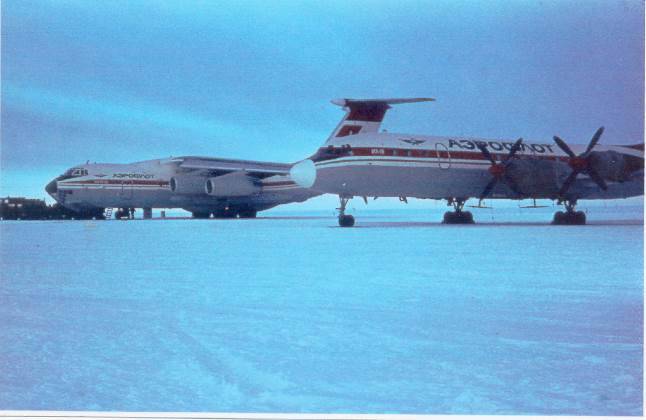
Antarctic station "Molodezhnaya", one of the most remote and dangerous places in the world, but there are no problems with basing normal planes
And there - no. Conventional wheeled land-based aircraft - one of the most unpretentious types of air transport. Aircraft can be based on unpaved airfields, where there is no asphalt at all, and this applies to heavy aircraft. To prepare for take-off, aircraft need several special vehicles and a tanker with fuel. In winter, they can land on ice airfields, while ensuring the absence of extraneous and dangerous objects on temporary runways is much easier than on water.
Normal aircraft do not need any steel plates, like "vertical lines". Climate is not so important to them as seaplanes or ekranoplanes.
All the airplane needs is a compacted strip of soil or snow, or a section of the highway. And that’s it.
See examples.
Example 1. The Guatemalan Air Force is surpassing the Hacker-Siddle 125 business jet, which was beaten off by the drug mafia. As you can see, just a clearing in the forest is used as a runway, in fact, an ordinary forest road.
In fairness, let’s say: SKVVP would have taken off from here too, but it would have plowed the strip very seriously, that is, the “airfield” would have turned out to be one-time. And so, while there is no rain, you can fly on it and from it regularly.
In fact, there is nothing special in such flights.
Still alive are people from that era when any normal pilot of an aircraft - even a large multi-engine one, such as TB-3, should have been able to find a glade suitable for landing from the air. But then the planes retained their universal qualities.
From history, we know that La-11 fighters, Tu-4 bombers, and Il-14 and An-12 transport planes made flights from airfields on drifting ice floes in the Arctic Ocean. A Tu-16 successfully landed on such an ice floe, however, due to an error during take-off, it hooked another plane, but this accident was not a foregone conclusion. Once, giant Tu-95s made a successful landing at such an airfield. And they successfully took off.
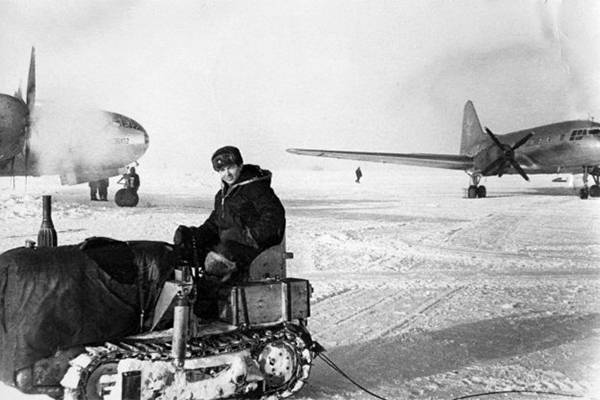
Polar station SP-6 on a drifting ice floe. Visible long-range bomber Tu-4 and transport IL-14
The Americans put the four-engine Hercules on the ship and then without any catapults and accelerators understood it into the air. About landing on ice airfields in Antarctica and talk too much.
Example 2. Flights of a twin-engine aircraft L-410 from the highway to the Congo. An aircraft in such conditions usually carries up to 2,5 tons of cargo.
Even from the same road, but a little different section.
As you can see, the plane literally in automobile mode travels along a curve and a broken road until it comes off the ground. Of course, this is not a big plane. But what are the big ones? And here is what.
And so:
On the ice in Antarctica:
Of course, there are landings on pre-prepared unpaved airfields, but there aren’t any steel plates, prefabricated runways needed for vertical lines, and non-freezing lakes nearby, like for seaplanes. Simply level and compact the earth or ice, equip a gas station, trenches or trailers for personnel, a mobile command and control tower, and that’s all.
But there are other examples.
In 1980, during the operation "Eagle Claw", which failed in general, in Iran, the US C-130 landed just in the desert. Prior to this, a CIA agent single-handedly collected soil samples from this site to determine if the sand would support the weight of the Hercules. And, although the operation failed, the planes both landed and took off.
Below is a video: Hercules sits on a platform in the desert. Apparently, once it was nevertheless leveled, but judging by the coating - for a long time.
But the landing on the ground of a huge and heavy S-17, and take off from there:
Can passenger heavy airplanes do this? May:
So much for the attachment to airfields, right? The second episode in the video, by the way, answers all the questions about the runway bombed by the enemy.
It is also worth noting that all the aircraft shown are not planes that were SPECIALLY designed for regular takeoffs and landings anywhere (and there are also such examples, for example, the legendary DHC-4 Caribou in the west).
In a modernized form, with turboprop engines and modern electronics, this machine was produced until 1974, and still continues to be relevant in its characteristics.
Well, of course, we remember the absolute champion in basing anywhere - this is our An-2.
What can be compared with a normal aircraft in terms of versatility in terms of basing? Only an amphibian with a chassis, which in summer can sit on a lake or in a calm bay, closed from the storm, and the rest of the time - in the same place as a wheeled plane. But the amphibian does not have the ability to provide the same flight performance, and the same sturdy landing gear as a conventional aircraft is not always possible because of the requirement to provide good weight return with a heavy body. Amphibian with multi-wheeled chassis, allowing you to sit on soft ground and not burrow into it, no. Thus, their superiority over conventional aircraft in terms of the breadth of available basing conditions is not obvious - it will at least appear very rarely when there is open water and there is no flat piece of land. And the only class of aircraft that are guaranteed to surpass normal aircraft in terms of available locations, are helicopters. And that is a fact.
The only aircraft that are really attached to concrete runways are heavy vehicles, such as the Tu-160, Tu-95, Tu-142, the presidential Il-96, and the like giants. But in the end, we have a lot of concrete runways.
The final conclusion is that ordinary planes with horizontal take-off and landing are the most versatile aircraft in terms of possible basing conditions after helicopters. In addition to helicopters, nothing can be compared to them in universality. And if seaplanes (amphibians) in narrow and rare conditions can still be useful even against the background of normal airplanes, then everything else (SCVVP, flying boats, float seaplanes) are just highly specialized aircraft, applicable once and somewhere there, where we are not and never will be. And the fact that this flying exotic is “more universal” than planes with horizontal take-off and landing are just myths.
These are the realities.
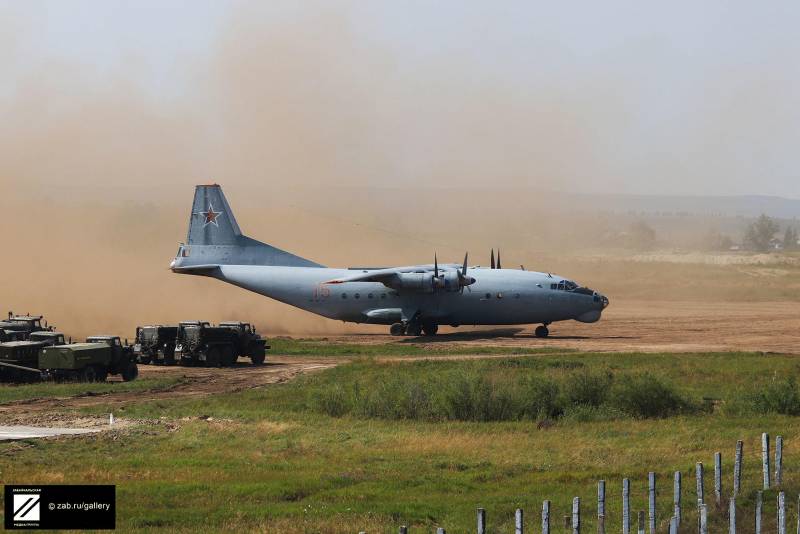
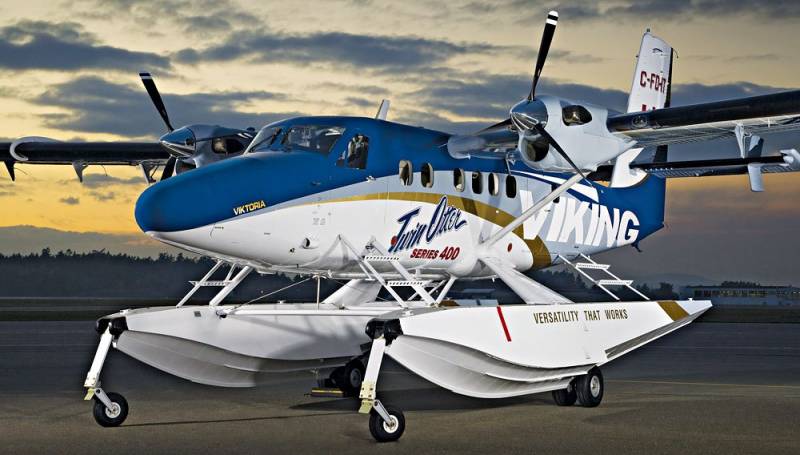
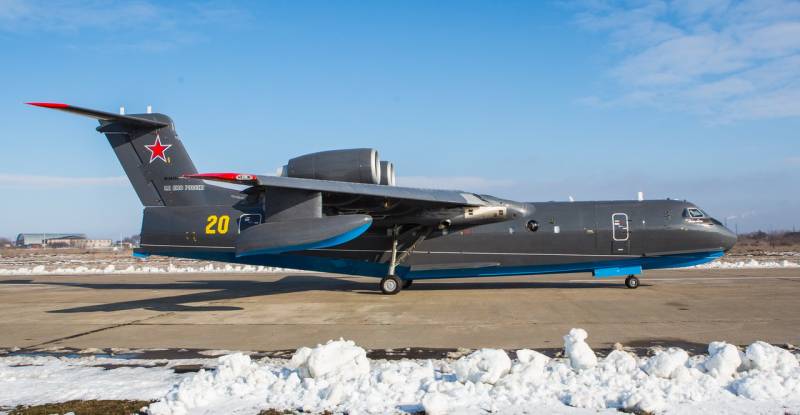


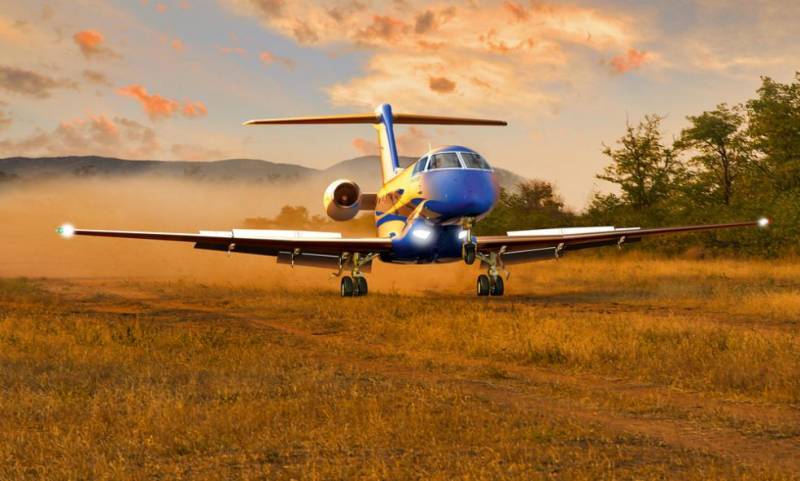
Information